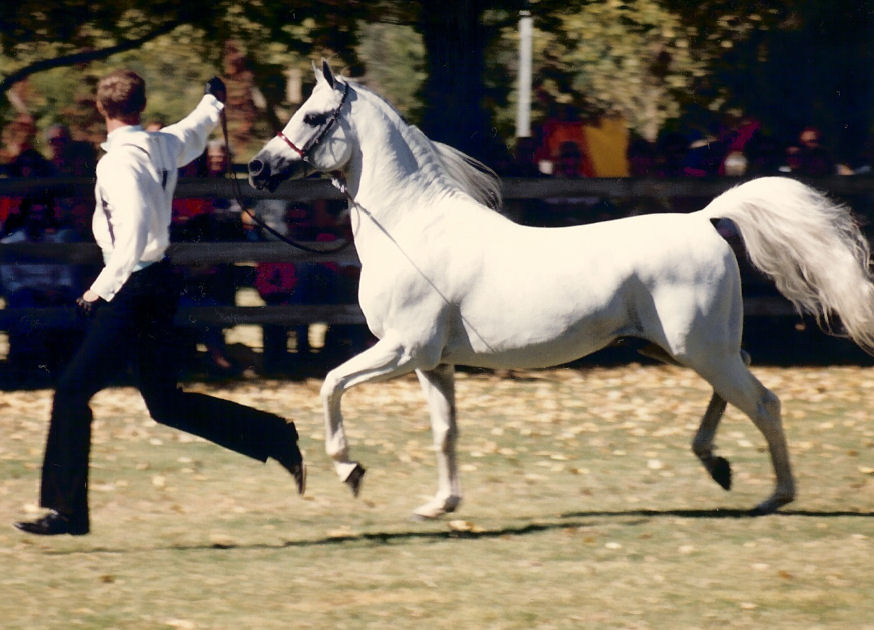
To the untrained eye, a horse is just a horse. However, to those out there who spend their days and nights thinking about, working with, and riding horses, we know that there most certainly is a difference between each type of equine. Read on for some of the more common horse breeds, as we’ve put together a little list for your convenience.
- Missouri Fox Trotter: First bred in the Ozark Mountains of where else but Missouri during the 1800s, the Missouri Fox Trotter is a mix of Arabia, Morgan, and Tennessee Walking Horses. They are best known for their smooth comfortable gate and are typically a mid-sizes horse used for trail riding and ranch work.
- Andalusian: One of the more elegant horse breeds, Andalusians have been around for thousands of years and were even mentioned in Homer’s The Iliad. Known for their grace and agility, they are commonly used in dressage and possess the ability to draw their haunches underneath their bodies. Their heights range between 15 and 16.2 hands, and they are most often found in a light grey color.
- Morgan: Morgans can track their lineage back to a single horse bred in Vermont during the 18th century to a man named Justin Morgan. It is believed that the first Morgan was a mix of Arabian and Thoroughbred horses, and was bred to combine favorable traits such as strength, intelligence, endurance, and a gentle calm demeanor. They are usually rather compact with height ranges between 14.2 to 15.2 hands, and come in an array of color variations.
- Arabian: Known as being one of the oldest horses in the world, this breed is also the most popular. Arabians are beloved for their intelligence, grace, strength, and incredible endurance. They were originally bred in the Middle East and have a large lung capacity for lengthy desert runs. Their most identifiable physical features are their dished profile with large eyes and nostrils but a tiny muzzle. They are between 14.2 and 15.2 hands, and typically have an affectionate personality.
- Appaloosa: The first Appaloosas were bred by the Nez Perce tribe of Native Americans during the 18th century from the area that is now Washington, Oregon, and Idaho. Their distinct spotted coats were mentioned by Louis and Clark on their journey across America, and the breed was almost wiped out during the white expansion into the Native American territory. Best known for their spotted leopard-like coats and quiet demeanor, they do most of their modern day work in Western disciplines.
- Thoroughbred: Sometimes thought of as just another name for a “pure bred” horse, Thoroughbreds are a breed entirely their own. Perhaps one of the most traditionally athletic horses, they are well known for their use in the racing industry thanks to their speed and stamina. First bred in 17-18th century England, they are a tall (between 15.2 to 17.0 hands), slim but well-chiseled horse that most commonly come in bay, dark bay or brown, chestnut, black, or gray.
- American Paint Horse: Commonly mixed up with Pinto horses, Paint horses are their own specific breed. They were bred from spotted Quarter and Thoroughbred horses, so their bodies are athletic, but their coats are distinctly theirs. American Paint horses have a unique combination of white and another color (usually black, bay, brown, and chestnut or sorrel), with the white fur in a splashed “paint” type pattern. They are treasured for their amiable personalities and bright intelligence.
- American Quarter Horse: These are the most popular breed in the United States, and are known for their muscular bodies and wide use in rodeos, ranches, races, and many other disciplines. They have a very even temperament and are usually very willing to please their owners. They have short and refined heads, a fairly straight profile, and wide muscular chest and hindquarters. Heights used to range between 14 and 16 hands but in the recent years they started getting taller, with many Quarter Horses averaging around 17 hands. Colors come most often in bay, black and brown, chestnut, palomino, buckskin and grey.
- Miniature Horse: Miniature horses have been around for hundreds of years, but only came to the US in 1930 to work in coal mines. Originally bred in the 1600s as pets for children of Royalty, they are often still used in entertaining and working with children. There are two classes of Miniature Horse with class A being 34 inches tall or less, and class B ranging from 34 to 38 inches tall.
- Hanoverian: Hanoverians are a Warmblood horse breed that originated in Germany, and are very successful in competitions for jumping, dressage, and eventing. They are well-loved for their athleticism, beauty, and grace in the arena, and have a rather “elastic gate” that covers a lot of ground while still looking elegant. Hanoverians are usually between 15.3 and 16.2 hands (though they can be bigger and smaller) and are quite even-tempered and easy to train.

